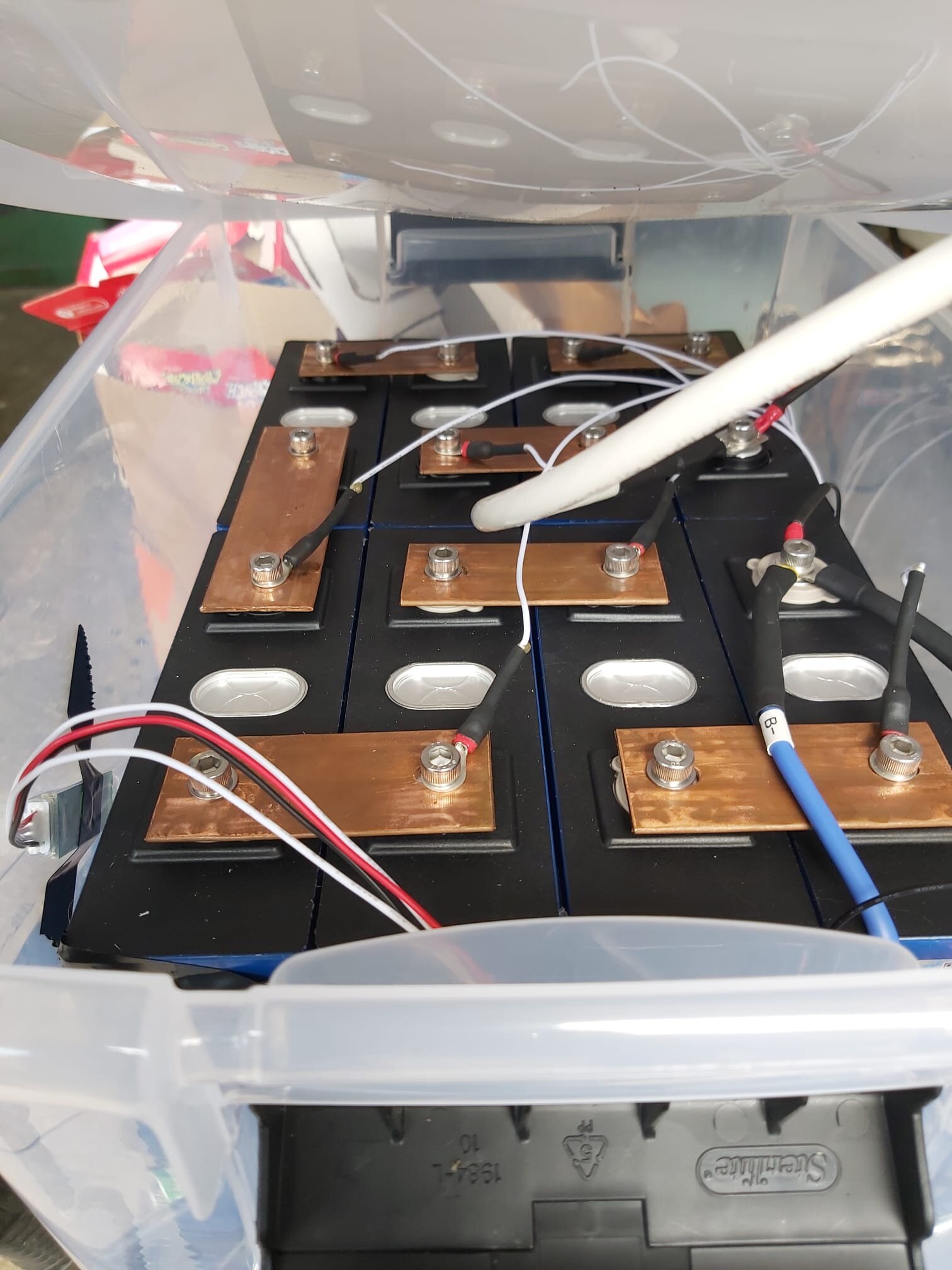Everyone loves math! That’s why everyone designs their own battery packs!!
To make math easier, and build exactly what you need (and not be wasteful by over building your battery), it is important to have the purpose in mind already with the needed parameters for the battery before you even begin assembling parts for said battery.
For example, say you want to build a battery for your boat to run the house loads. This is an excellent application for a lithium battery! Imagine that you turn everything on at the same time in your boat, how many amps will you be drawing?
It is important to remember that your inverter needs to be part of the calculation, and to plan on the inverter running at surge capacity, as this might happen and in that event, the battery needs to be able to manage the load.
For this example, we will think of a boat with a refrigerator, navigation lights, interior lights, and an inverter that runs the boats air conditioner. We will assign powers to these devices and say that the fridge draws 8 amps, the navigation lights draw 0.5 amps, the interior lights draw 5 amps, and the 2000W inverter draws 170 amps (250 amps at surge).
In our example, with everything turned on at the same time, the battery will be asked to provide 183.5 amps (or 263.5 amps during surge). Because electronics are always upgraded as years go by, it’s not a bad idea to factor in some reserves in this battery and call it 300 amps for the plan.
Suddenly, we have a number! 300 amps is what the battery you build needs to be able to supply at a moments notice. With this number, everything becomes a simple matter of arithmetic.
Each cell contains power, but that power can’t go anywhere without a circuit. Inside the battery, these interconnecting pieces are the secret to getting energy from your cells and into your electronics! They are typically metal bars that can flow a certain number of amps. If the bar is not big enough for the current you will asking from it, then it will turn into a fuse and burst into flames as the metal is overheated, until it burns away and breaks the connection; naturally, this is something we want to avoid!
In a previous post, I mentioned the need to decide on cylindrical vs prismatic cells. Cylindrical cells are much smaller while prismatic cells are much larger. This means that each prismatic cell will hold more power while having fewer connections to other cells. Fewer connections also means that each connection suddenly needs to carry more power!
Picture a prismatic 12v battery with a capacity of 100 amps. Each prismatic cell is 3.2v and 100ah. You would be looking at 4 cells, connected in series by 4 plates. This setup would be called a 4s1p battery as it consists of 4 groups in series of 1 group in parallel. This means that each plate will be flowing 100 amps!
Now picture a cylindrical 12v battery with the same capacity of 100 amps. Each cylindrical cell is 3.2v, same as the prismatic, but only hold 5ah. Suddenly, you will have a 20 cells in parallel to make the 100 amps, and 4 groups of them linked up in series to make the 12v battery. This arrangement is called 4s20p as you have 4 groups in series of 20 cells each hooked up in parallel. The interconnects will be a lot more plentiful here but they will still need to flow the full 100 amps.
For cylindrical cells, the common interconnect material is Ni strips. They are 8mm across and 0.15mm thick, and have an ampacity (the amount of amps that they can carry) of 5 amps. To carry the full 100 amps, you will need 20 interconnects running between the parallel groups linking in series to the next group.
This is where the work part comes into the equation, 1 big plate that you bolt on or 20 small strips of metal that need to be spot welded to the ends of the cells. How much is your time worth?
This is great, you built a battery that will be able to supply 100 amps! Excellent, except that your boat needs to be able to draw 300 amps! Either you need to build two more batteries so that each one merely gives up 100 amps at a time as they all work together, or you need to beef up your battery with its interconnects.
In the world of prismatic cells, the metal interconnect bars flow 100amps. All you need to do is place 3 stacked on top of each other so that they can flow 300 amps between the three of them. In the world of cylindrical cells, where the Ni strip flows 5 amps, you suddenly need 60 interconnects instead of just 20!
Things escalate very quickly, but the components are all the same and it’s merely the act of repeating a known process over and over to grant you the result you are looking for. By knowing what you need before you start, you will be able to build the battery that you actually need, instead of guessing and hoping that a random assembly will meet your needs.



